The 2022 Ford Maverick Is Refreshingly Honest
While there are plenty of reasons that the 2022 Maverick stands apart from the state of play in the truck world right now, it's Ford's refreshingly blunt approach to design and accessories that might be the most shocking. Yes, the Maverick may be priced from an unprecedented $20k (plus destination), and it may be the first pickup in the market to come with a hybrid drivetrain as standard, but it's how the cabin looks, feels, and adapts that I suspect will have a longer lasting impact on owners.
Indeed, while the Maverick may be Ford's smallest pickup, it's arguably the one bursting with the most ideas. Envisioned not just as a starter truck for people who might one day consider a full-size F-Series, it's also intended as a potential distraction for those who would otherwise end up in an SUV, a crossover, or even one of the few remaining jacked-up wagons.
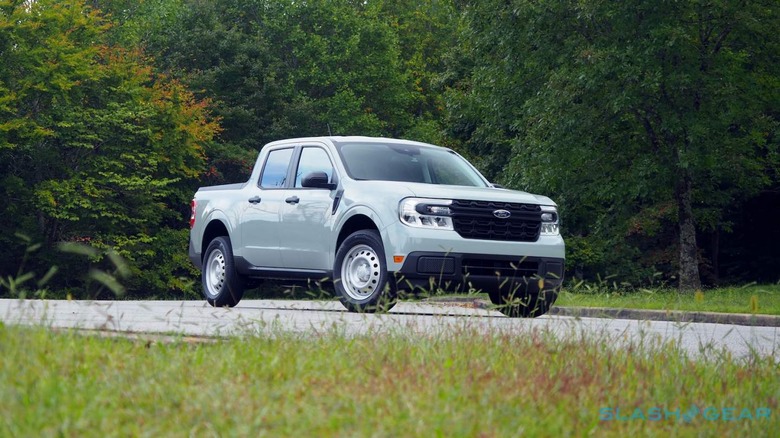
That's a broad audience, and one where the Maverick may find itself competing with a range of styles and designs. Rather than simply attempt to slim down what we've seen in F-150 and Ranger, then, Ford took a very different approach. Indeed, after my time with the 2022 Maverick, what lingers is just how unusual the truck feels compared to the status-quo in the segment, as the ideas of value and design collaborate rather than compete.
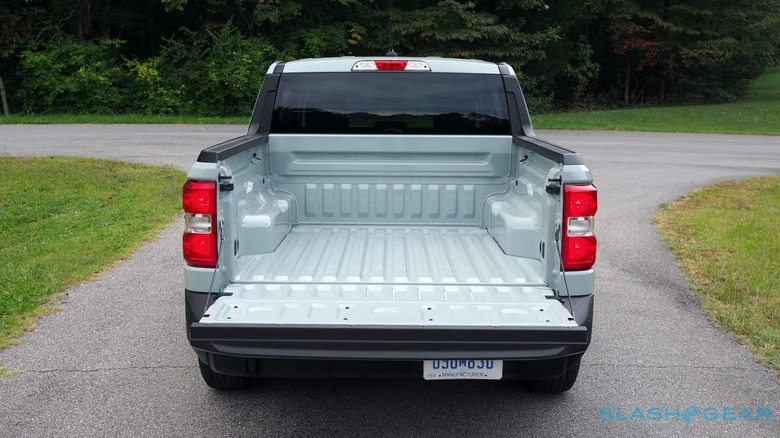
According to Ford's Scott Anderson, Interior Design Manager, one of the key inspirations for the Maverick was the low-cost city cars that have become commonplace in Europe. Not generally exported to North America, compact models from Renault, Peugeot, Citroen and others have turned design on a budget into a fine art. A colorful palette, along with playful shapes and moldings, combine with a ruthless focus on getting maximum value for money.
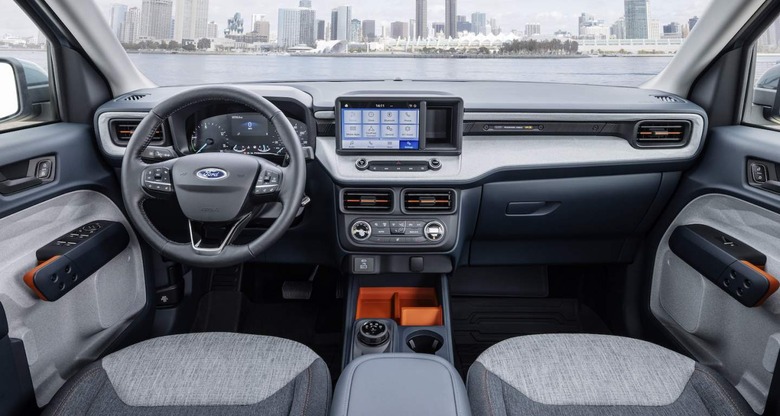
The language of vehicle luxury is a pretty strange one, shaped in no small part by interpretations of what's "high end" from decades ago. That's led to situations where plastic trim is given fake leather texturing and molded stitching; where every screw and fastening has its own little cap to hide it from view; and where seat fabrics try their best to ape leather.
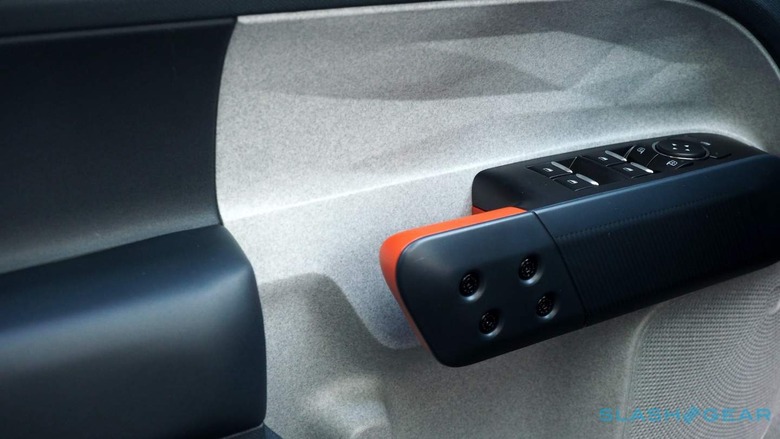
It's all absent in the Maverick, and the pickup is all the better for it. Ford's dashboard, door, and center console plastics, for example, don't try to pretend to be hide. Instead they have geometric surfacing that catches the light in interesting ways, or a more authentically "plastic" texturing that doesn't try to disguise the underlying material. Recycling isn't hidden away but made a feature, like the carbon fiber regrind – typically a waste product of manufacturing – blended in to give it a pattern.
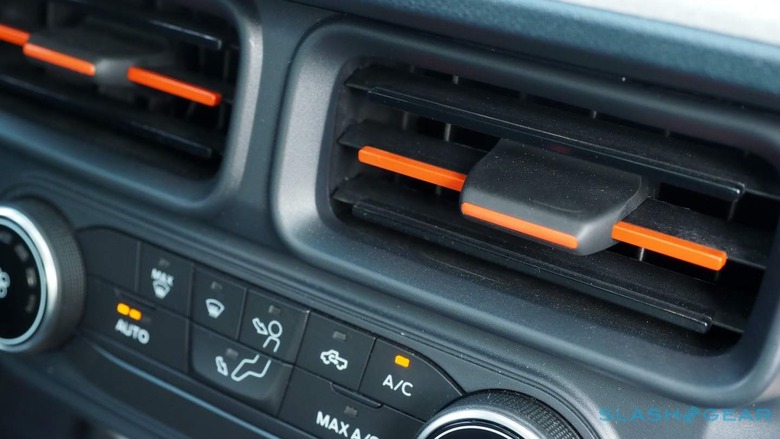
Elsewhere, it's about what has been left visible as much as what was hidden. The screws in the door handles are an excellent example of that: in most vehicles, each would have its own, custom cap. The Maverick team, though, avoided the tooling costs and complexity by opting for more visually-pleasing screw heads and leaving them exposed. Anderson, who previously worked on the Bronco Sport, says he now has a selection of different screw designs to suit Ford's latest nameplates that can be used in future projects.
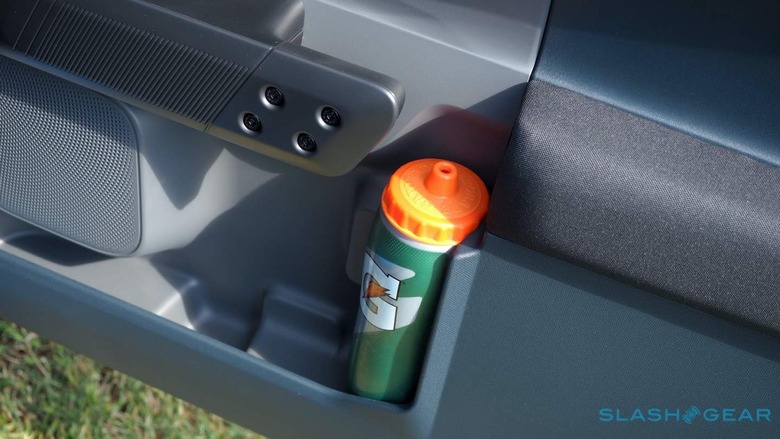
What's left isn't a spartan cabin, by any means. Ford has prioritized chunky, physical controls for the HVAC system – easily adjusted even if you're wearing gloves – for example, rather than handing over all that to a touchscreen.
Infotainment systems have increasingly come to dominate the cabin experience in recent years, with larger and larger touchscreens – and more complex software – giving the dashboard the feel of a tablet. The Maverick's dash, in contrast, is topped by a more circumspect 8-inch touchscreen, and it doesn't even run Ford's SYNC 3 platform as standard. In fact, even having that screen there at all was something the pickup's interior designers tried to avoid.
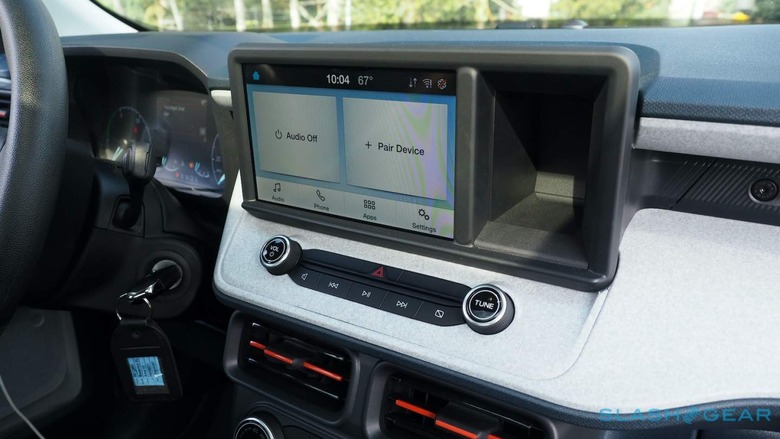
Again, taking inspiration from affordable European compact cars, one possibility that was explored was having a smartphone mount instead. Your phone would do all the multimedia, calls, hands-free messaging, and navigation that many drivers – particularly the younger audience that Ford expects the truck to appeal to – already expect, only with pride of place on the dashboard.
Unfortunately for that idea, Anderson says, federal safety regulations are pretty strict about smartphone use and accessibility while driving. Ford shelved the no-native-touchscreen approach and went for what might be the next best thing, a simple display with standard Bluetooth, Android Auto, and Apple CarPlay, along with plenty of USB ports in the front and rear.
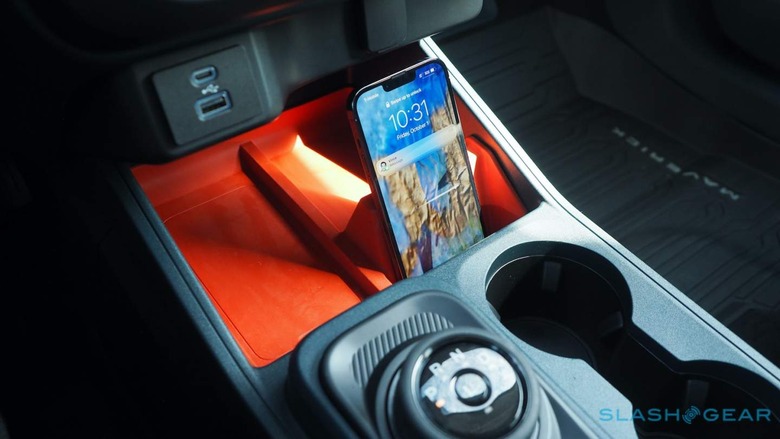
This angle – that you may not only want to bring your own hardware, but be fairly DIY and tech-savvy too – isn't limited to smartphone projection, either. FITS, or Ford Integrated Tether System, consists of eight slots dotted around the cabin, into which different accessories like cupholders, bag hooks, and more can be fitted. Ford will sell you FITS accessories, but is also going to release the CAD files so that you could 3D print – or, presumably, whittle should you be sufficiently talented with a knife – your own.
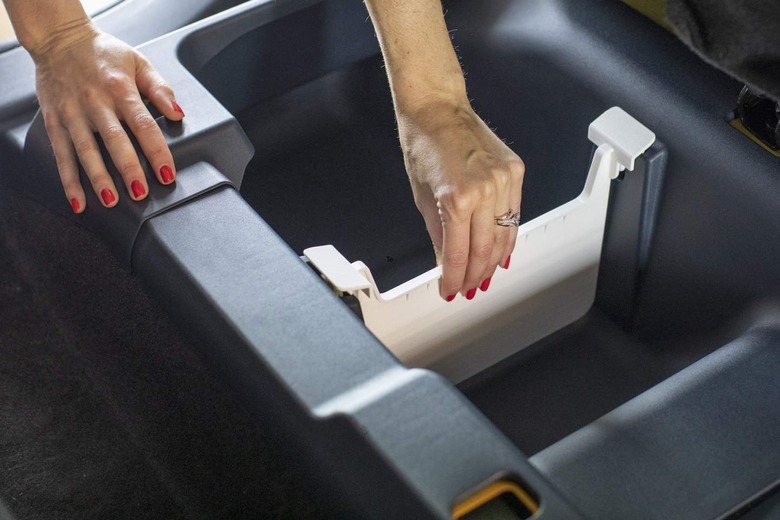
Ford is upfront about how it's hoping to motivate Maverick owners – and modders – into being cheerleaders for FITS. Much as the 3D printing scene has embraced sharing files and open-source designs, the aim is to encourage that same sort of community as pickup owners come up with their own customizations. What's less clear, at the moment, is where that will happen.
Maverick buyers will find QR codes around their new truck, which link to Ford's official videos showing bed and cabin mods. There are already videos, for example, demonstrating how to wire in cheap LED light strips, or integrate air compressors. The bed itself has notches and slots molded in, so that you can use cheap lengths of 2x4 or 2x6 lumber to divide the space, or even construct useful structures like bike racks.
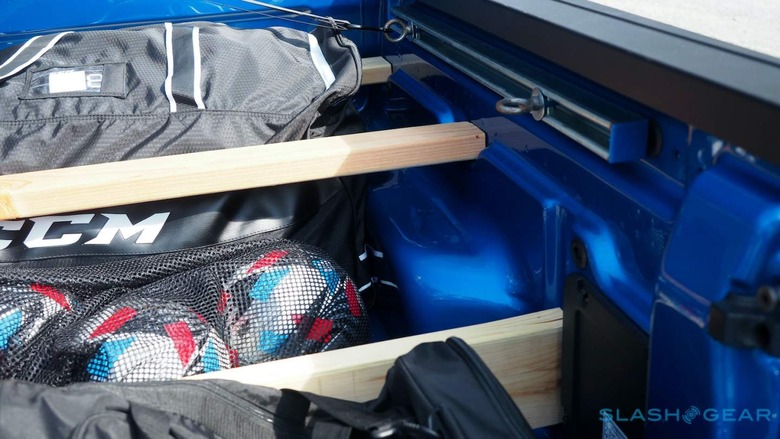
The automaker hasn't decided yet, however, whether it'll be hosting third-party mods in the same way. There are a variety of reasons for that indecision, it seems, though liability for the safety of any customizations has to be fairly high on the list of concerns.
Overall, though, the aim is to have community adaptations and accessories live alongside – rather than replace – official Ford parts. There'll be no shortage of those, with a roughly 150 strong catalog of add-ons at the Maverick's launch, and dealers will be happy to take your money if you want bed rails, cargo dividers, cabin cubby organizers, and more. If you'd rather go it your own way, though, that's fine too: Ford is just hoping you publicize what you did to everyone else, too.
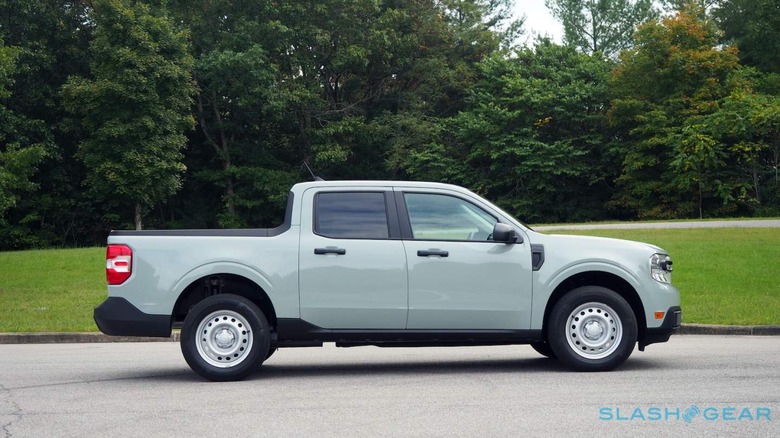
Weirdly, the net result is a truck that feels far more appealing at the base end of the range than when you get to the top-end 2022 Maverick Lariat. While Lariat trim comes with all manner of niceties and comforts that the entry XL (and mid-tier XLT) lacks, it also shifts away from that essence of owner personalization which makes the pickup so charming. If choice is the true luxury, then the Maverick's relatively blank canvas represents something truck drivers have typically had to look back to older, used models to attain.
